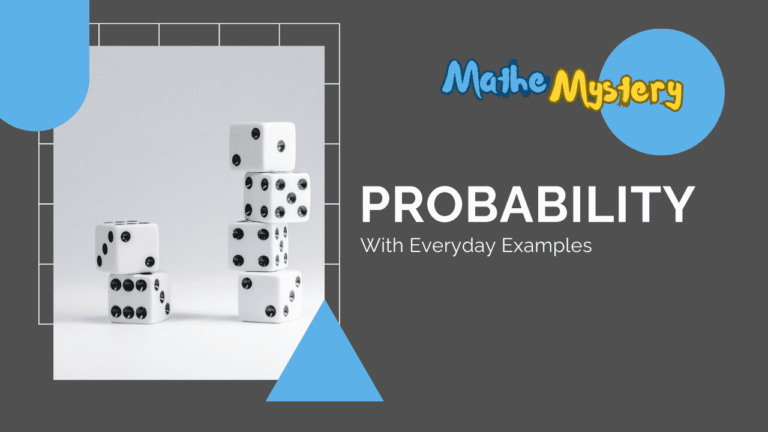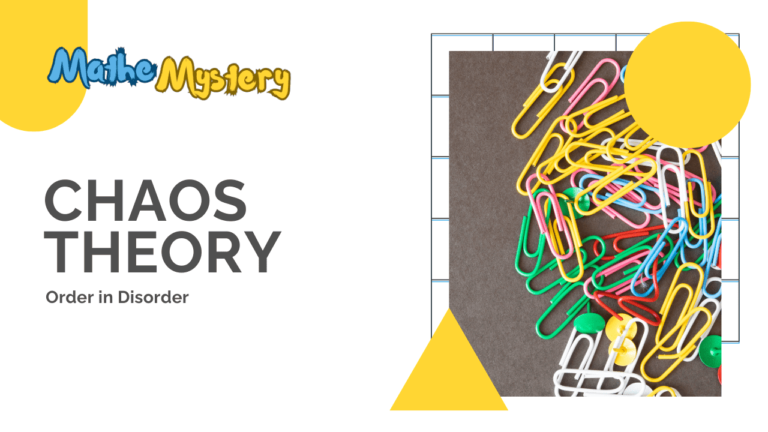Introduction to Probability in Everyday Life
Probability in Everyday Life is very important for making decisions and understanding how likely different events are to happen. Whether you’re trying to predict if it will rain, figuring out the risk of getting stuck in traffic during rush hour, or making choices about financial investments, probability helps guide what you should do. Probability is a part of so many routine situations, affecting how we interpret information and make informed decisions. This post will explain why Probability in Everyday Life matters and give an overview of key probability concepts that help us understand uncertainties and make better choices.
Examples of Probability in Everyday Life
Coin Tossing
The simple act of flipping a coin shows Probability in Everyday Life. When you toss a coin, there is a 50% chance it will land on heads and 50% chance it will land on tails. This basic example highlights the core principles of probability.
Rolling Dice
Board games like Monopoly and Craps heavily rely on the Probability of rolling certain numbers on the dice. Understanding the likelihood of each possible dice roll is key to making good strategic moves in these games.
Card Games
Card games like poker, blackjack, and Uno involve complex probability calculations. Skilled players consider the odds of drawing specific cards to decide their next move, demonstrating how Probability influences even recreational activities.
Weather Forecasts
Meteorologists use advanced probability models to predict weather patterns. The probability they calculate for things like rain, sunshine, or temperatures guides daily planning for individuals and businesses. This shows how Probability in Everyday Life impacts decision-making.
Weather Planning
Everyday decisions like whether to carry an umbrella or plan an outdoor event are influenced by weather forecasts providing probability estimates. This underlines the widespread impact of Probability on our routine activities.
Sports Strategies
In sports, coaches and players analyze probabilities strategically. Understanding the likelihood of different outcomes, like predicting an opponent’s next move or deciding when to take a risk, is crucial for success.
Insurance
The whole insurance industry relies on the principles of Probability in Everyday Life. Insurance companies use statistical probability models to estimate the likelihood of events like accidents or illnesses, and set premiums and coverage based on those probabilities.
In addition to individual insurance policies, larger societal risks like natural disasters are addressed through financial tools called catastrophe bonds. These are influenced by the probability of natural disaster events occurring.
Video Games
Beyond just board games, many video games also use Probability concepts. Things like random events, critical hits, or loot drops are commonly determined by probability calculations, affecting gameplay experiences and strategies.
Game Theory
The field of game theory explores scenarios where the outcome depends on the choices made by multiple participants. Probability is central to game theory, guiding decision-making and predicting potential outcomes.
Traffic Signals
The timing of traffic lights is optimized based on the Probability of traffic flow patterns at different times. This ensures efficient traffic management while reducing congestion and improving safety.
Medical Diagnosis
In healthcare, Probability is vital for accurately diagnosing diseases. Doctors use probability models to assess the likelihood of different conditions based on symptoms and test results.
Election Results
Political analysts use Probability models to predict election outcomes. Looking at the probability of candidates winning in different areas or demographics informs their campaign strategies.
Lottery Probability
Lotteries are a clear example of Probability in action. Understanding the low odds of winning the lottery helps people make informed decisions about whether to participate.
Shopping Recommendations
Online retailers use algorithms based on Probability to give personalized shopping recommendations. They analyze data on user preferences and purchase history to suggest products a customer is more likely to be interested in.
Stock Market Predictions
Investors use Probability models to make smart decisions in the stock market. Analyzing past trends helps estimate the probability of different potential investment outcomes.
Grocery Store Staffing
Supermarkets optimize staffing levels using Probability based on historical shopper traffic patterns. This ensures enough staff during busier hours while avoiding overstaffing quieter periods.
Natural Disasters
Probability plays a major role in assessing and preparing for natural disasters like earthquakes and hurricanes. Understanding the probability of these events occurring allows communities to have effective response plans ready.
What is Sample Space?
The term sample space refers to all the possible outcomes that could occur in a particular situation. In probability, the sample space represents all the outcomes that the reader or listener should keep in mind when considering the likelihood or probability of something occurring.
Some examples to explain the term “sample space” are: for a coin toss, the sample space would be heads or tails; for the rolling of a die, the sample space is the numbers from 1 to 6.
Importance of Sample Space in Probability
The concept of the sample space is very important in probability. The sample space refers to all the outcomes that have probability, so the sample space should be defined clearly. This is important because people can accidentally include or exclude some outcomes when they explain things orally or in writing.
Finding Sample Space
- Figuring out the sample space is an important first step when analyzing probability. One common way is to list out all the possible outcomes of the random situation. For example, when flipping a fair coin, the sample space would be {heads, tails}.
- Another method uses set notation to represent all the potential outcomes in an organized way. This provides a clear and concise definition of the sample space. Which method is used depends on how complex the situation is and how easily the outcomes can be listed.
Calculating the sample space is crucial for probability analysis. For discrete events, the sample space has distinct, countable outcomes. Probability calculations often involve counting how many of those outcomes are desired, and expressing that as a fraction or percentage of the total sample space. This quantitative approach allows understanding the likelihood of specific events happening, showing the practical use of Probability in Everyday Life.
Number of Elements in Sample Space
The number of possible outcomes affects the chances of each individual outcome happening. Counting the total number of possible outcomes is important for calculating the correct probabilities. In situations where all outcomes are equally likely, like rolling a fair six-sided dice, it is easy to count the total number of possible outcomes, which helps in finding the accurate probabilities.
Drawing Sample Space Diagrams
Drawing pictures or diagrams to show all the possible outcomes is a helpful method, especially when there are multiple stages or events involved. Probability trees and Venn diagrams are commonly used to show all the possible outcomes in a picture form. Drawing these diagrams not only helps in understanding complex situations better but also helps in applying probability in everyday life by allowing people to visualize the relationships between different outcomes.
Types of Probability
Understanding the various types of probability is crucial for navigating uncertainties in everyday life.
Theoretical Probability
Theoretical probability is based on math principles and assumes that all outcomes have an equal chance of happening in an ideal situation. It involves calculating the probability of an event by dividing the number of desired outcomes by the total number of possible outcomes. This type of probability is the foundation of probability theory, providing a theoretical way to assess chances and make predictions.
Empirical or Experimental Probability
Empirical or experimental probability is based on observed data and real-world outcomes. It involves conducting experiments or observations to determine how likely events are to occur. Unlike theoretical probability, empirical probability is derived from actual experiences, making it more relevant for assessing probabilities in practical, everyday situations.
Theoretical Probability vs Experimental Probability
Theoretical probability is based on mathematical calculations and the assumption that all outcomes are equally likely in controlled conditions. In contrast, experimental probability is derived from real-world observations and actual data, making it more reflective of actual outcomes in practical situations. Understanding the difference between theoretical and experimental probability is important for applying probability concepts to real-life scenarios, where uncertainties and variations exist beyond theoretical expectations.
| Aspect | Theoretical Probability | Experimental Probability |
|---|---|---|
| Definition | Based on mathematical calculations and theoretical assumptions. | Derived from real-world observations and empirical data. |
| Nature of Data | Predictive and idealized. | Observable and based on actual outcomes. |
| Calculation Method | Involves counting equally likely outcomes and calculating probabilities. | Requires conducting trials or experiments and calculating frequencies. |
| Application | Used in controlled and theoretical scenarios. | Applicable in real-world scenarios where observed outcomes provide data. |
| Represented by | Mathematical formulas and equations. | Data tables, charts, or histograms showing observed frequencies. |
| Predictive Power | Ideal for scenarios with known and controlled conditions. | Reflects actual outcomes, making it more applicable in practical situations. |
| Limitations | Assumes equal likelihood of outcomes. | Susceptible to variations and outliers in observed data. |
| Examples | Tossing a fair coin, rolling a six-sided die. | Conducting experiments like flipping a biased coin, or rolling a loaded die. |
Compound Probability
Compound probability arises when multiple events are involved. It combines the probabilities of individual events to assess the likelihood of a combination of outcomes occurring. Compound probability is applicable in various scenarios, from predicting the chances of winning multiple games in a sports tournament to assessing the probability of a sequence of events in a business strategy.
Probability and Events
Understanding the relationship between probability and events is essential for navigating uncertainties in everyday life.
Simple Event Probability
Simple event probability involves calculating how likely a single outcome is to occur in a given situation. It is a basic concept in probability theory, providing a way to understand the chances associated with individual events. For example, when rolling a fair six-sided die, the probability of getting a specific number, say a three, is calculated by considering the number of desired outcomes (getting a three) divided by the total possible outcomes (six). This simple calculation shows how probability in everyday life extends to basic events and decisions.
Independent and Dependent Events
Probability in everyday life often involves understanding the relationship between events. Independent events are those where the occurrence of one event does not affect the probability of the other event happening. In contrast, dependent events are connected, meaning the outcome of one event impacts the probability of the next event. Recognizing the difference between independent and dependent events is essential for making accurate probability calculations in situations ranging from business decisions to personal choices.
Compound Events
Compound events involve multiple outcomes or conditions, and understanding their probabilities is crucial for making informed decisions. Whether it’s predicting the outcome of multiple coin tosses or assessing the chances of winning various games in a sports tournament, compound events highlight the complexity of probability in everyday life.
Equally Likely Events
Equally likely events occur when each outcome within a set has the same probability of happening. This concept is fundamental in probability theory and often arises in scenarios such as rolling fair dice or choosing cards from a standard deck. Recognizing equally likely events allows individuals to calculate probabilities accurately and make sound judgments based on expected outcomes.
Probability of Disjoint Events
Disjoint events, also known as mutually exclusive events, are events that cannot occur at the same time. Understanding the probability of disjoint events involves assessing the likelihood of one event occurring while considering that the other event will not occur. This concept is applicable in various real-life situations, from analyzing the chances of different weather conditions to predicting the outcomes of independent business ventures.
Joint Probability
Joint probability refers to the likelihood of two or more events occurring together. It involves considering the intersection of probabilities and assessing the combined likelihood of multiple outcomes. Joint probability is relevant in scenarios where events are dependent on each other, such as the probability of both getting a red card and a blue card from a deck at the same time. Understanding joint probability aids in comprehensive risk assessment and decision-making in diverse contexts.
Probability of Impossible Events
While probability typically deals with the likelihood of events occurring, considering the probability of impossible events is an interesting aspect. Impossible events have a probability of zero, as they cannot occur in a given context. This concept emphasizes the boundaries of probability theory and helps in understanding the full range of possible outcomes. The exploration of events considered impossible enriches the overall understanding of probability in everyday life by acknowledging the limits and constraints within which probability operates.
Conclusion
Probability plays an important role in many parts of daily life, from weather forecasting and financial investments to sports strategies and medical diagnoses. By applying probability concepts, people can assess risks, predict outcomes, and make sound choices in both personal and professional situations. Probability in everyday life empowers people to navigate uncertainties with confidence, contributing to more informed and strategic decision-making processes.
Probability in everyday life goes beyond just theoretical calculations, as it is present in various aspects of decision-making and problem-solving. By summarizing key probability concepts, highlighting practical applications, and encouraging further exploration, we can foster a greater understanding and appreciation for the role of probability in shaping our daily experiences and guiding our actions.




